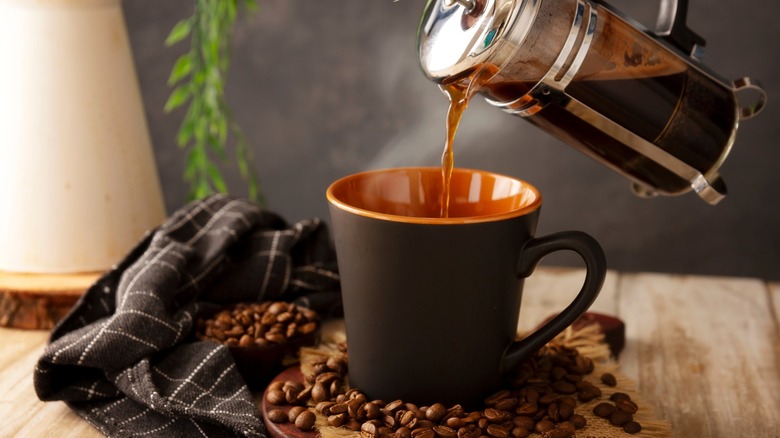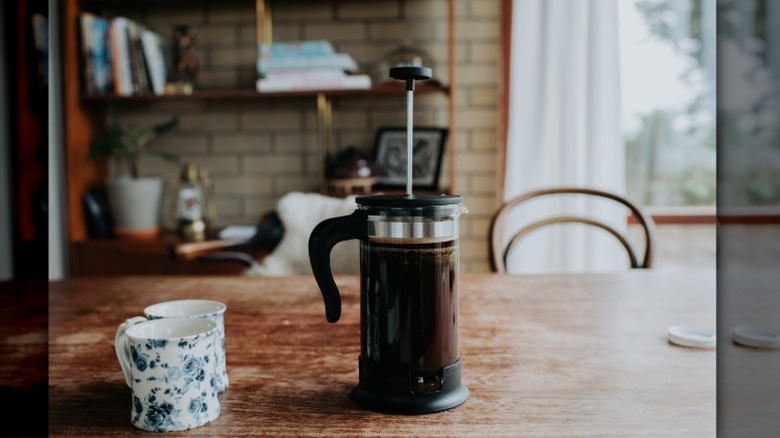The Simple Mistake That's Stopping Your French Press Coffee From Reaching Its Full Potential
For many folks, that first invigorating sip of coffee that sets the tone for the day begins with a trip to Starbucks for their favorite handcrafted drink. Still, despite the Green Mermaid's uncanny popularity, plenty of people prefer to brew their jolt juice at home. Coffee connoisseurs on team French press often argue it's the only way to experience a bold, flavorful cup of joe. However, according to Matt Woodburn-Simmonds of Home Coffee Expert, there's one French press mistake that could be sabotaging the full potential of your morning perk.
Using a French press is a far cry from the minimalist approach of tossing some grounds into a drip machine. There are a few key factors which make the difference between a bold, creamy cup of java and a watered-down cup of regret. Perhaps the greatest factor is how much liquid you use. "The best coffee-to-water French press ratio for me is 1:13, so 13 grams of water for every 1 gram of coffee," Woodburn-Simmonds told The Takeout. "You need enough water to fully surround the coffee grounds for even extraction and for the flavor to not be too concentrated."
Now, even Woodburn-Simmonds admitted that 1:13 isn't necessarily the end-all be-all ratio for everyone. "This is a little stronger than most people who tend towards 1:15 or 1:17, but I like coffee that really packs a punch," he said. Careful measuring is paramount. The difference between a watered-down brew and a coffee that slaps is just a few grams. "Finding the sweet spot for you will take a couple of tries, but once you've nailed it, then it shouldn't need to change."
More French press coffee mistakes to avoid
Some people swear you need specific roasts when using a French Press, but according to Woodburn-Simmonds, it's really a matter of preference. "You can make a French press with any roast," he said. However, the size of the grounds does matter. "You always want a very coarse grind, like kosher salt, for French press," he continued. "Steeping the grounds for 4 minutes is a lot of water and coffee contact time, so finer grinds will be very bitter."
Still, even when your grounds are course and your ratios are spot on, the amount and temperature of the water are two crucial factors that can make or break a stellar cup of joe. "Heat your water to 200 degrees Fahrenheit." Beyond that point, you're setting yourself up for a burnt-tasting cup of coffee. Too far below that, though, and it won't be hot enough to extract all the flavors.
Timing is another essential component of properly operating a French press. "Once your water is at the correct temperature, start your timer and pour double the weight of your beans and stir, then wait 45 seconds to bloom your coffee," Woodburn-Simmonds said. "This allows all the carbon dioxide to escape and gives a better flavor." After the coffee has bloomed, you can pour in the rest of the hot water. "Once the timer hits four minutes, plunge and serve immediately." It's a more nuanced technique than other coffee brewing methods. But done correctly, you may be surprised how much using a French press can improve your morning perk.

